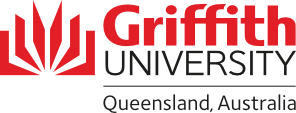Please note that this is an on-going project.
Project Description
Martensitic Ti6Al4V samples were fabricated by laser powder bed fusion additive manufacturing, water quenching of wrought and the additively manufactured Ti6Al4V samples respectively, their microstructural characteristics, tensile properties and deformation behaviours have been investigated in this study.
These samples showed differences in grain orientations, size of the prior β grains, thickness of the martensite (α’) laths, the lattice strain and presence of the β phase between the α’ laths. A relationship between the yield strength and the thickness of α’ laths and lattice strain has been developed.
The significant difference in the ductility in terms of the total strain at fracture among the martensitic Ti6Al4V samples processed by the different routes has been observed and investigated. The additively manufactured Ti6Al4V showed the highest post-uniform plastic deformation (deformation after necking) with rapid reduction of stress, its failure mode was dominated by the inter-α’ quasi-cleavage and intra-α’ ductile fractures. The water quenched-wrought Ti6Al4V displayed the negligible post-uniform plastic deformation, the inter-prior β cleavage fracture was its dominant failure mode. The water quenched-additively manufactured Ti6Al4V produced the highest yield strength and medium post-uniform plastic deformation, during which the reduction of stress was much slower, its failure mode was dominated by the inter-α’ quasi-cleavage fracture.
Plastic deformation was mainly taken by the sliding between α’ laths, however, grain reorientation and slip in α’ with the different scales in the martensitic Ti6Al4V processed by the different routes were also observed with the evidence of the changes in the relative intensities and shift of 2θ angles for the diffraction peaks in X-ray diffraction (XRD) spectra in the fractured samples compared to the as-processed samples.
Project Personnel and Beneficiaries
Aerospace industry and academic community
Outcomes to Date
(1) The microstructural features of the martensitic Ti6Al4V processed by additive manufacturing and water quenching have been characterised;
(2) The relationship between the yield strength and the thickness of the martensite laths and lattice strain has been developed;
(3) The mechanical properties and deformation mechanisms of the martensitic Ti6Al4V have been investigated;
(4) The effect of deformation on the microstructure and XRD spectra of the martensitic Ti6Al4V after fracture has been studied.
Project Significance
Martensitic Ti6Al4V was processed by water quenching and 3D printing;
Microstructure was characterized by using optical microscopy and scanning electron microscopy;
Mechanical properties were investigated by employing tensile testing and microhardness testing;
Deformation mechanisms were explored.
Related Link
External link to https://www.sciencedirect.com/science/article/abs/pii/S0921509322002258

